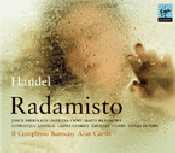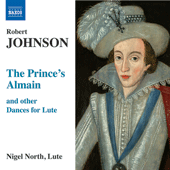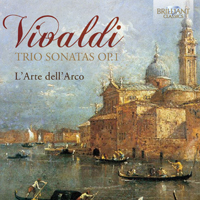|
| Project 366 continues in 2017-18 with "Time capsules through the Musical Eras - A Continued journey through the Western Classical Music Repertoire". Read more here. |
According
to Wikipedia, Early
music refers to music, especially Western art music, composed prior to
the Classical era. The term generally comprises Medieval music
(500–1400) and Renaissance music (1400–1600). Whether it also
encompasses Baroque music (1600–1760) is a matter of opinion in some
learned circles. Further, the term has come to include "any music for
which a historically appropriate style of performance must be reconstructed on
the basis of surviving scores, treatises, instruments and other contemporary
evidence."
To begin
our set of time capsules, I thought I’d begin with a pair of listener guides
that illustrate Medieval and Renaissance Music:
Listener
Guide # 123 “Anonymous” - Anonymous works are works of art or literature, that have an
anonymous, undisclosed, or unknown creator or author. For the most part, works
attributed to Anonymus pre-date the Baroque era, and can be thought of as being
passed down following “oral” tradition (ITYWLTMT Montage #245
– 14 Apr. 2017)
Listener
Guide # 124 “Robert Johnson: Lute Music” - Robert Johnson was the son of lutenist to
Elizabeth I. Following the death of his father in 1594, Robert was taken under
the care of Lord Hunsdon, later Lord Chamberlain to Elizabeth and the patron of
the acting company later called The King’s Men of which Shakespeare was a
member. This created a strong artistic influence on Johnson, who went on to
write songs and music for this company including plays by Shakespeare, Beaumont
and Fletcher, and Webster. Johnson's main claim to fame is that he composed the
original settings for some of Shakespeare's lyrics, the best-known being
probably those from The Tempest. (Cover2Cover
#3 – 2 May 2017)
As general
examples of baroque music, let me suggest the following pair of additional
listener guides:
Listener
Guide # 125 “Helmut Walcha - Organ Masters Before Bach” – This Guide provides an overview
of compositions from the 16th to the 18th centuries that stands as a foundation
for Bach’s great organ music. Bach walked a long distance to meet Buxtehude,
and stayed with him for three months, absorbing much of his technique. Other
composers represented include such well known names as Johann Pachelbel and
Georg Böhm, as well as lesser known composers such as Nicolaus Bruhns, Samuel
Scheidt and Vincent Lübeck. (Cover2Cover
#2 – 4 April 2017)
Listener
Guide # 126 “Baroque Showcase” – Thius listener guide avoids the “usual suspects” – a few of whom we
will focus on later - and provides a modest sampling of compositions by other
baroque-era composers. (ITYWLTMT
Montage #241 – 24 Feb. 2017)
Johann
Sebastian Bach probably reigns supreme among Baroque composers – he will be the
subject of his own chapter in December. Two other names deserve significant
mention:


Antonio
Vivaldi (1678–1741)
Antonio Vivaldi was one of the most renowned figures in European baroque music. Born in Venice, Vivaldi was ordained as a priest though he instead chose to follow his passion for music. A prolific composer who created hundreds of works, he became renowned for his concertos in Baroque style, becoming a highly influential innovator in form and pattern. He was also known for his operas, including Argippo and Bajazet.
Full
Biography – http://www.bach-cantatas.com/Lib/Vivaldi.htm
Listener
Guide # 127 “Vivaldi – Trio Sonatas op. 1” – Vivaldi published a collection of twelve
trio sonatas (his opus one) in 1705. This edition has only partly survived;
today's performers rely on a reprint by Estienne Roger of Amsterdam which dates
from around 1715. (Cover2Cover
#4 – 26 Sept. 2017)
:format(jpeg):mode_rgb():quality(90)/discogs-images/R-6077657-1410469904-8594.jpeg.jpg)
:format(jpeg):mode_rgb():quality(90)/discogs-images/R-6077657-1410469904-8594.jpeg.jpg)
Listener
Guide # 128 “Vivaldi - New Philharmonia Orchestra - Leopold Stokowski – Le
Quattro Stagioni” –
Perhaps the finest "big band" version of the Four Seasons comes from
this oft-reissued Phase 4 recording which brims with the conductor's
characteristic and highly personal tonal color, rescoring and inflection, but
it's deeply heartfelt and thoroughly delightful. (Vinyl’s
Revenge #11 #4 – 13 Oct. 2015)


George
Frideric Handel (1685–1759)
George Frideric Handel composed operas, oratorios and instrumentals. Handel was born in Halle, Germany, in 1685. In 1705 he made his debut as an opera composer with Almira. He produced several operas with the Royal Academy of Music in England before forming the New Royal Academy of Music in 1727. When Italian operas fell out of fashion, he started composing oratorios, including his most famous, Messiah [Listener Guides #50 and 51].
Full
Biography – http://www.bach-cantatas.com/Lib/Handel.htm
Handel’s
work catalog - http://www.musiqueorguequebec.ca/catal/handel/hangf.html
Listener
Guide # 129 “George Frideric Handel (1685-1759)” – A modest sampling of works by Handel,
including his music for the Royal Fireworks. (ITYWLTMT
Montage #244 – 31 Match 2017)
Listener
Guide # 130 “Shellac's Revenge” – The Handel organ concertos, composed in London between 1735 and 1751,
were written as interludes for performances of his oratorios. They were the
first works of their kind for organ with chamber orchestra accompaniment and
served as a model for later composers. (Once Upon the
Internet #56 – 28 Match 2017)


Listener Guides #131 – 133 – “Handel: Radamisto” - [Opera in three acts]
Joyce DiDonato (Radamisto), Maite Beaumont (Zenobia), Zachary Stains (Tiridate), Patrizia Ciofi (Polissena), Carlo Lepore (Farasmane), Il Complesso Barocco under Alan Curtis (Once or Twice a Fortnight - 11 Mar 2014)
Synopsis @ https://www.operalogg.com/radamisto-opera-av-georg-friedrich-handel-synopsis/
Libretto @ http://www.haendel.it/composizioni/l...pdf/hwv_12.pdf




No comments:
Post a Comment